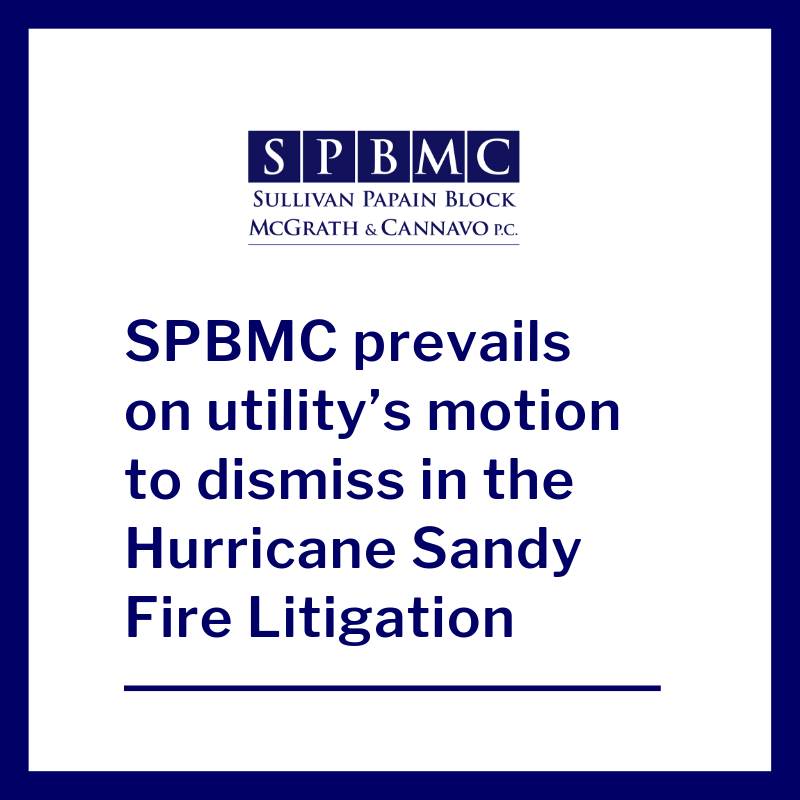
The home and business owners whose properties were destroyed by 3 separate fires on the Rockaway Peninsula during Hurricane Sandy cleared yet another legal hurdle when the presiding judge denied the defendants’ second motion to dismiss. In this motion, LIPA and National Grid asked the court to find that they did not have a legal duty to de-energize in the face of the storm and that, if there was such a duty, only 7 of the more than 100 plaintiffs could recover based on an antiquated rule espoused by New York’s highest court in 1866 in the case of Ryan v. New York Cent. R. Co. In denying the motion in its entirety, Justice Bernice D. Siegal found that the defendants had a duty to de-energize and that the plaintiffs’ arguments eviscerated the Ryan rule, describing it as a relic left over from 1866 that should not be followed in this case. The decision means the victims of the defendants’ failure to de-energize despite forecasts for record-breaking and historic storm surges in low-lying areas, such as the Rockaway Peninsula, will have their day in court.
The court ruled that while the defendants had a duty to de-energize, it will be for a jury to determine whether that duty was breached under the circumstances. In so holding, Justice Siegal found that, “The defendants, who provided electricity to areas known to be vulnerable to storm surges, could have, and should have, promulgated written protocols for storm de-energization” and that, “The defendants could have studied and planned in advance when and where de-energization is required and how it must be accomplished.” The decision found that the harm to the plaintiffs was foreseeable as there were ample weather reports of the approaching superstorm and unprecedented storm surges that would occur and that “the dangers of flood waters coming into contact with live electrical power were well known in the utility industry.” Justice Siegal also found that the the plaintiffs made a showing that there was no clear line of authority within the defendants’ utility structure charged with the duty of making the decision of whether to de-energize in the face of the ominous forecast associated with the approaching storm. Indeed, discovery in the case yielded the facts that utility personnel abandoned the Rockaway Peninsula before the storm made landfall, leaving no means to monitor how storm conditions would impact its electrical equipment, including the Rockaway Beach substation situated across the street from Jamaica Bay until after-the-fact and that the power to the Rockaway Peninsula was ultimately turned off remotely by a utility system operator on Long Island whose computer data indicated that the electrical equipment on the peninsula was already either flooded or on fire.
The rule in the Ryan case essentially held that a landowner who had a fire start on their property could be held liable for fire damage caused to an adjacent property but if the fire extended beyond the adjacent property, those damages were too remote to create liability on the owner of the land where the fire started. The rule was promulgated to protect the burgeoning railroad industry in the late 1800’s and, although not followed, remarkably, the Ryan case has not expressly been overturned. Justice Siegal ruled that, “the Ryan rule is inconsistent with the trend of modern tort law in which liability has been expanded” and denied the defendants’ motion on that ground as well.
